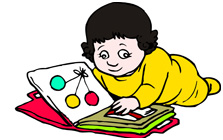Squint is a misalignment of the eye where the two eyes are pointed towards different directions. The misalignment may be constant for a few, while it may be intermittently occurring for some others. The deviation of the eye may be in any direction – inward, outward, upward or downward. If the child is not treated at the appropriate time, a condition called amblyopia occurs, which eventually leads to permanent loss of vision

Causes of Squint
- Heredity
- Weakness of the eye muscles or problem with the nerves in the eye muscles
- Blurred or poor vision caused due to cataract, corneal scars, glaucoma, refractive errors, optic nerve disease, retinal disease, tumors of the eye etc.,
- Injuries
Symptoms of Squint
- One eye or both eyes point to different directions
- Children can have defective vision in one eye or both eyes
- Children with squint, sometimes close one eye in bright sunlight
- Some children turn their face or tilt their head in a specific direction in order to use their eyes together
- Children sometimes experience double vision or confusion
Treatment
Squint due to refractive errors is corrected by prescribing suitable spectacles
Surgical Treatment

Before Surgery After Surgery
- Surgical treatment is given to the child based upon the improvement in vision by spectacles correction and patching therapy. The misaligned eyes can be straightened through surgery. In this surgery, the muscles are detached from their original insertion and shifted to a different spot. The amount of shift is based on the measurement done with special prisms.
- Surgery is usually done under general anesthesia for children. It is ensured that the child is free from any illness like fever, common cold, cough etc., for subjecting to general anesthesia
- Surgery is done either on both eyes simultaneously or one eye at a time
- The surgery is done on the white portion of the eyeball
- The eyeball is not opened
- Stay in the hospital is only for a day after the surgery
- Treatment does not stop with surgery. Glasses may have to be continued to maintain clarity of vision. Patching therapy may be needed to be continued for some time after the surgery
Squint is not a sign of good luck. It affects your child’s
vision and appearance
Loss of vision is preventable in children if squint is treated as early as possible, preferably before 2 years of age
As the child grows older, it becomes more difficult to treat squint and regain the lost vision. However, cosmetically straightening the eye is possible at any age

